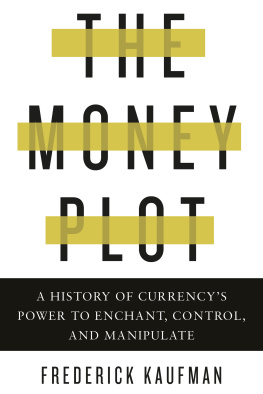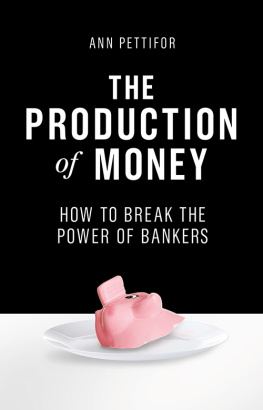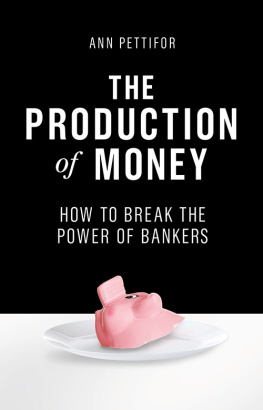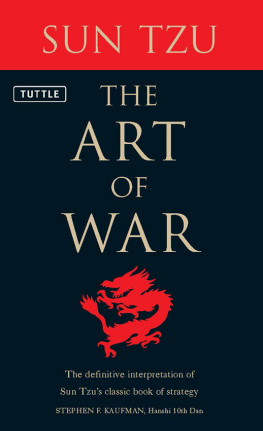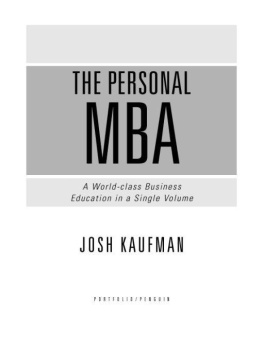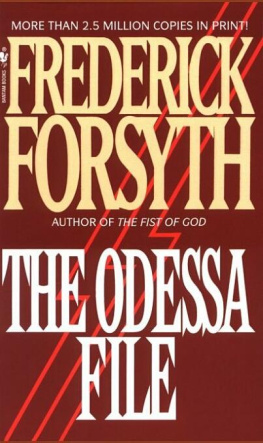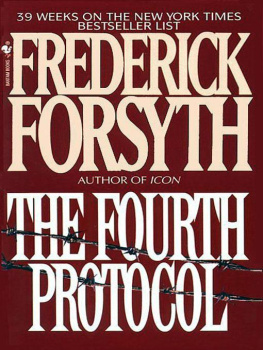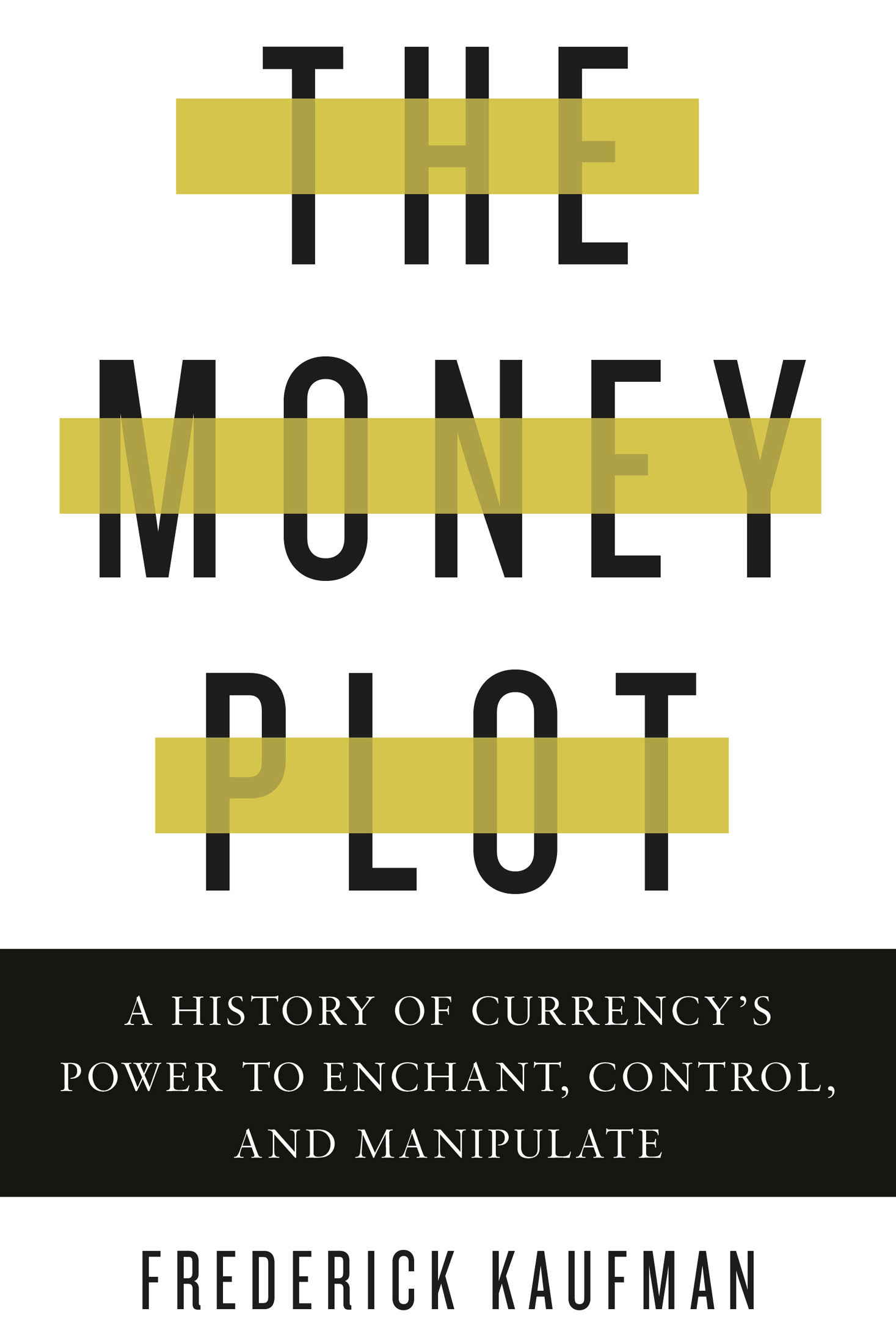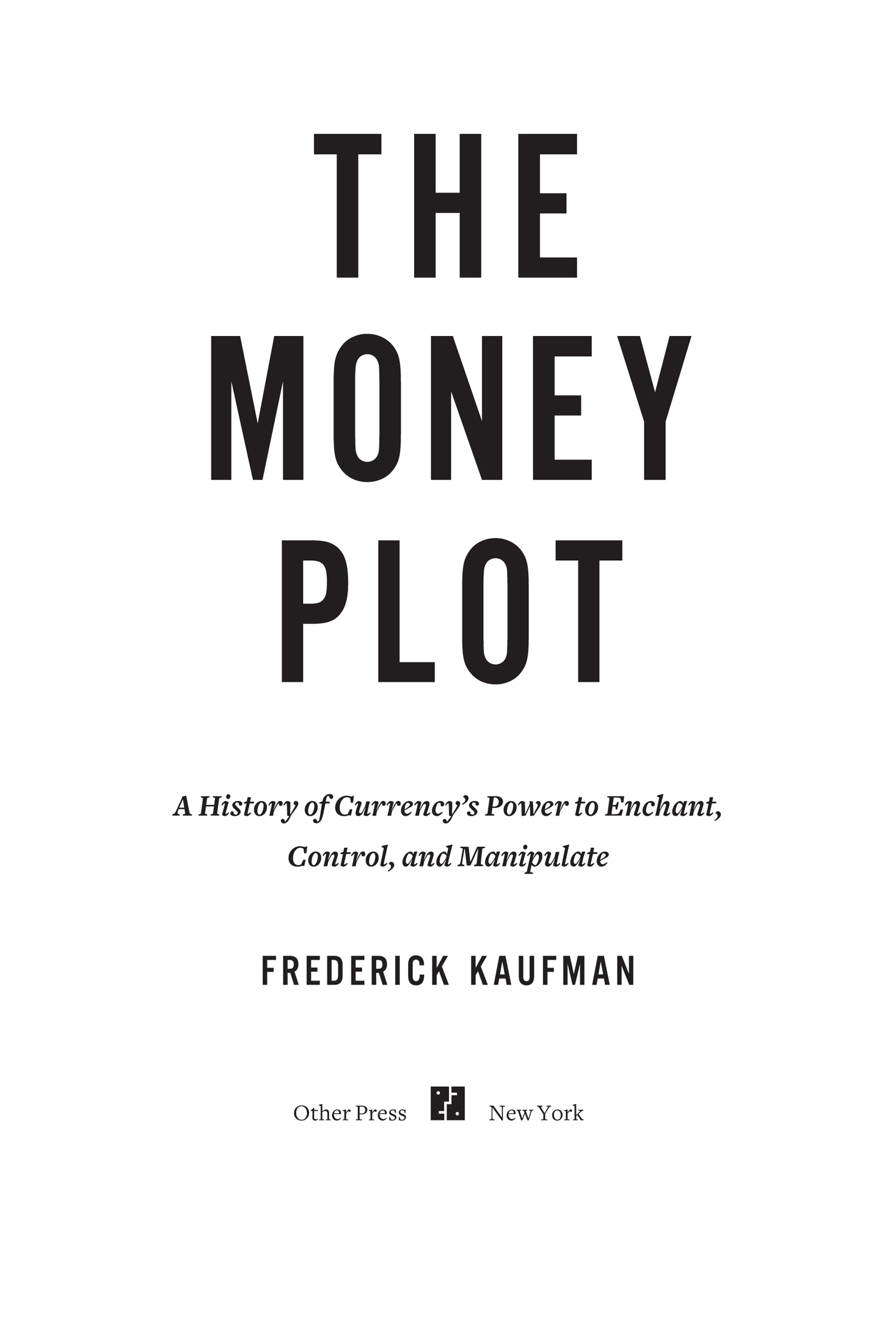Contents
Landmarks
Print Page List
PRAISE FOR
The Money Plot
In The Money Plot, Frederick Kaufman offers a startling thesis that money is a metaphor, a fiction and makes it plausible by brilliantly interweaving economics, literary theory, anthropology, and political history. Distilling vast erudition into wonderfully readable prose, Kaufman gives us an important book that brims with fresh insights into the ways that money, from ancient times to today, has been a floating symbol with no stable meaning.
DAVID S . REYNOLDS ,
winner of the Bancroft Prize for American History and author of Abe: Abraham Lincoln in His Times
Economists have long understood that we hold paper money only because we believe others will want to hold it too. In this fascinating book, Frederick Kaufman takes the argument one step further: those beliefs can only be sustained by stories. The story of money is a story. It is not from the benevolence of the banker, the stockbroker, or the financier that we expect our dinner, but from their regard for the tales that only gifted fabulists like Kaufman can tell.
ANDRS VELASCO ,
former Finance Minister of Chile and current Dean of the School of Public Policy at the London School of Economics
FascinatingKaufman has a sharp eye for colorful anecdotes and a witty and incisive prose style. The result is an appealing compendium of musings and money-related minutiae.
PUBLISHERS WEEKLY
ALSO BY FREDERICK KAUFMAN
Bet the Farm: How Food Stopped Being Food
A Short History of the American Stomach
Copyright 2020 Frederick Kaufman
Billie Eilish epigraph from everything I wanted, by Billie Eilish OConnell and Finneas Baird OConnell. Lyrics copyright 2019 by Kobalt Music Publishing Ltd, Universal Music Publishing Group.
Production editor: Yvonne E. Crdenas
Text designer: Julie Fry
All rights reserved. No part of this publication may be reproduced or transmitted in any form or by any means, electronic or mechanical, including photocopying, recording, or by any information storage and retrieval system, without written permission from Other Press LLC, except in the case of brief quotations in reviews for inclusion in a magazine, newspaper, or broadcast. For information write to Other Press LLC, 267 Fifth Avenue, 6th Floor, New York, NY 10016. Or visit our Web site: www.otherpress.com
The Library of Congress has cataloged the printed edition as follows:
Names: Kaufman, Frederick, 1961- author.
Title: The money plot : a history of currencys power to enchant, control, and manipulate / Frederick Kaufman.
Description: New York : Other Press, 2020. | Includes bibliographical references.
Identifiers: LCCN 2020010462 (print) | LCCN 2020010463 (ebook) | ISBN 9781590517185 (hardcover) | ISBN 9781590517192 (ebook)
Subjects: LCSH : Money History. | Banks and banking History. | Commerce History. | Precious metals. | Bitcoin.
Classification: LCC HG 221 . K 2925 2020 (print) | LCC HG 221 (ebook) | DDC 332.4/9 dc23
LC record available at https://lccn.loc.gov/2020010462
LC ebook record available at https://lccn.loc.gov/2020010463
Ebook ISBN9781590517192
a_prh_5.6.0_c0_r0
for
Patty Laxton
Money is a kind of poetry.
WALLACE STEVENS
I had a dream
I got everything I wanted.
BILLIE EILISH
contents
I / SMALL MONEY
BEHIND THE CURTAIN
THIS BOOK TRACES the history of two activities we generally consider to be different exchanging money and telling stories to show how they are the same. Chapters follow parallels in the growth and development of each. Thus we have the money plot, at the core of which resides the most compelling symbol ever created.
This book does not ask whether we should love or hate or even need money. The question is: What drives our belief in this thing called money? The answer has to do with the nature of symbols, and why humans thirst for them.
When economist John Maynard Keynes declared in his 1924 Tract on Monetary Reform that money based upon gold was a barbarous relic, he was arguing that gold was simply one possible manifestation of a substance that required no specific shape. Gold was a symbol, and as such could be replaced by a variety of other symbols. The form that money assumed was accidental. Money not made of gold was still money.
The symbolic nature of money that is, the fact that money can inhabit any number of material configurations and remain money was itself not part of the Keynesian theory. But without Keynes embrace of money as a symbol there could have been no theory, much less Keynesian practices such as deficit spending, whereby a sovereign state may pay for anything it wants or needs with money it prints, money that symbolizes no more and no less than its own sovereign power. A dollar, for example, embodies nothing but the full faith and credit of the United States. Thus is a dollar symbolic.
When it comes to money, symbols are useful. That is why Keynes was not alone among economists. If they had ever met, Adam Smith and Karl Marx would have soon discovered that when it came to theories of prices, costs, wages, and profits, they disagreed. But, along with Keynes, both would have readily consented to the fact that even as money possessed an extraordinarily practical capacity to influence a wide variety of very real, nonmetaphorical things, money itself was metaphorical. Moneys influence and the effects of its dominion may have been disputed, but there was no debating the fact that a dollar or a pound or a mark were placeholders, symbolic building blocks for what the great economists believed to be much larger concerns. Those larger concerns became the business of illustrious economic schools of thought that arose in the wake of Smiths ideas about free markets and Marxs ideas about class struggle and proletarian revolution.
Of course, it is perfectly understandable that the economists who came up with the most enduring and influential theories were not always as interested in studying the symbolic core of their systems as they were in its pervasive effects. Perhaps because so many economic subjects have been so bitterly disputed, the artifice that lies at the bottom of them all has been lost in the shuffle. The following pages turn the tables. Instead of surveying the far-reaching implications of this or that school of economic thought, this book will prioritize the symbolic bedrock.
Which is most definitely not to say that this book emerged without the influence of economic thought. The approach deployed throughout is in many ways indebted to the cultural insights of the Hungarian economic historian Karl Polanyi, who in 1944 the year the Bretton Woods Agreement made the United States dollar the worlds preeminent currency published a book called The Great Transformation, followed thirteen years later by Trade and Market in the Early Empires, written with a group of colleagues and followers. In these books, Polanyi drew on cross-cultural anthropology to investigate the history of economies that had thrived before there were markets as we have come to know them, finding that something very much like money had existed long before coin and bill.

